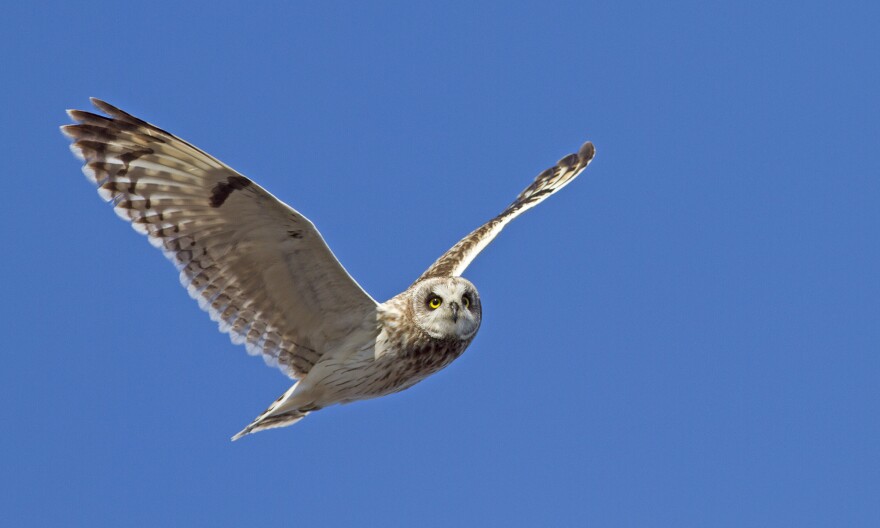A study that started in Idaho is expanding across eight western states in an effort to help imperiled short-eared owls. Little is known about these unique birds.
Short-eared owls are medium-sized brown and white birds with a distinctive round face. Rob Miller is a research biologist with Boise State’s Intermountain Bird Observatory. He says scientists believe they’re in trouble.
“We estimate that there’s been a 60 percent decline in their population in the last 40 – 50 years in the West. We don’t have a firm grasp on that number to know for sure, which is one of the reasons we’re studying them much more in-depth than has been done,” says Miller.
Miller lists some possible reasons for their decline, including changes in land use, invasive cheat grasses, large range fires--all of which cut into their native, open country habitat.
Miller has been studying the owls in Idaho, along with several partner agencies and some citizen scientists since 2015. The program expanded and now they study the birds in Utah, Nevada and Wyoming. And now, thanks to a $500,000 grant from the Fish and Wildlife Service, the study will cover eight western states for another three years.
The expansion starts this March and Miller is looking for 600 citizen scientist volunteers to spend two hours a year surveying an area for the owls. He says they’ll be looking for an elaborate courtship display that the males perform.

“They’ll spiral up 500 feet or so in the air and then they clap their wings and they essentially freefall out of the sky and then pull up at the bottom, before they hit the ground, and spiral back up again and repeat it. So that’s what we’re trying to catch, a time when they’re most visible,” Miller says.
Miller says they hope to learn the causes of the bird’s decline and what state agencies and others can do to help them.
Miller will start signing up volunteers next week.
Find Samantha Wright on Twitter @samwrightradio
Copyright 2017 Boise State Public Radio



